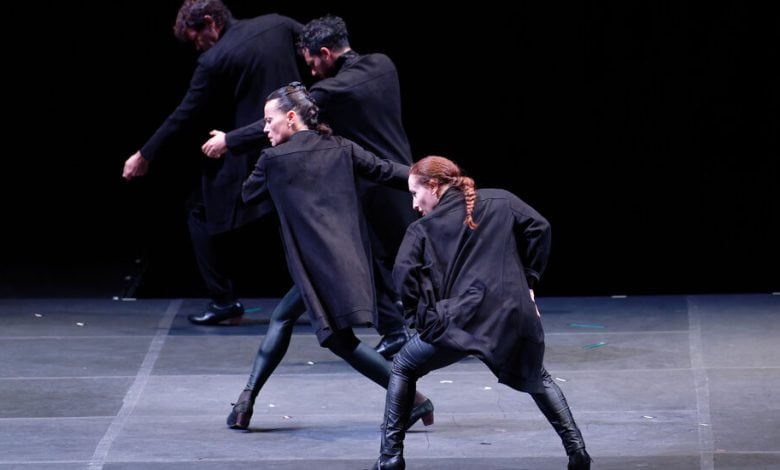Review: Noche Flamenca, Raising the Dead With Goya

As models for choreography, even the greatest painters are of limited use. Dance, for all of its concern with stage compositions, is an art of motion; painting, even when it implies action, is static. But painters can provide choreographers with an angle of vision, a way of looking at the world.
Each section of “Searching for Goya,” the program that Noche Flamenca is performing at the Joyce Theater this week, takes its title from a work by the Spanish artist Francisco Goya. Most sections start — or start and finish — with a tableau-like staging of the image in question. The dancing doesn’t exactly bring it to life. It’s more that the image is a frame for the flamenco.
“Searching for Goya” is in many ways a typical Noche Flamenca program. It has the company’s signature virtues: excellent musicians (especially the core singers Manuel Gago and Emilio Florido); distinguished guest dancers (Jesús Helmo, Pablo Fraile and Paula Bolaños); and a climactic solo by its star, Soledad Barrio. The aesthetic is unostentatious, only the essentials. And all this aligns well with Goya. It jibes with his tragic realism.
The show dares to take on scenes from Goya’s “Disasters of War” series, and while the choreography (by Barrio, the other dancers and the director, Martín Santangelo) lacks Goya’s terrible explicitness, it has its own expressive power. When these dancers march like soldiers, they do so in frighteningly complex rhythms. When the sound of an artillery blast or firing-squad salvo simulated by feet struck against the floor, bodies jerk with a visceral effect that viewers of Goya can only imagine.
The creepiest theatrical moment derives from “Las Camas de la Muerte” (“The Beds of Death”), Goya’s etching of a hooded mourner and covered corpses. The dance represents this with a long white sheet that bulges as if with bodies. The mourner moves along her diagonal path and the sheet does, too. It lengthens and slides like a giant worm, an endless body count.